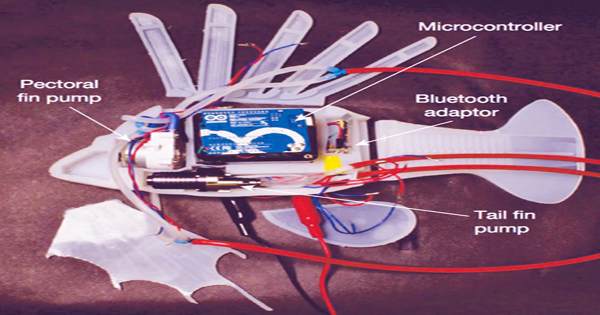A team of engineers from Cornell University wanted to create a robot that was able to pass through its environment without releasing energy too prematurely, reporting in the Journal of Nature. Organisms in nature clearly manage to achieve this through interconnected systems and multiple parts. For example, the human circulatory system, Not only does it supply oxygen to all of our cells but it also helps our body temperature control like a radiator and transport immune cells to fight off invaders.

Using synthetic blood this robot fish can swim for hours
From stylish robots powered by archeological batteries and stylish motors to the ocean away, engineers have turned to nature to develop a robotic lionfish, complete with a soft silicone skin that pumps synthetic blood that energizes its movement for a day. In anticipation of the flow of the design, this new project has created a robot with a “synthetic vascular system” that pumps hydraulic fluid to move its wings, to operate itself, to provide structure, and even to store energy. Robots, of course,
do not have this luxury. They often rely on single, segmented components that usually work alone: a battery, motor, cooling fan, etc.
According to a Cornell University blog post, it has achieved a power concentration equal to about half that of a Tesla Model S lithium-ion battery. Lithium-ion batteries are an alternative to going for dense energy storage, but they can be heavier and heavier. In the lionfish robot, energy-saving blood is blood, based on a redox flow battery that uses dissolved components to store energy in liquid electrolyte solutions.
Rob Shepherd, an associate professor of mechanical and aerospace engineering, said in a statement, “We want to take a lot of components into a robot and convert it into a power system. If your robot already has hydroelectric fluids, you can tap into large power stores and give the robots extra freedom to operate autonomously.
It may not be the slowest or fastest for robots – it moves at a snail’s speed of 1.5 feet per minute – it is able to store enough energy to swim upwards for more than 36 hours. “Our bio-motivational approach can dramatically increase the power density of the system while keeping soft robots mobile for longer.” “In nature, we see how long animals can work while doing sophisticated tasks. Robots can’t do the same thing for very long, “Shepherd added.
















